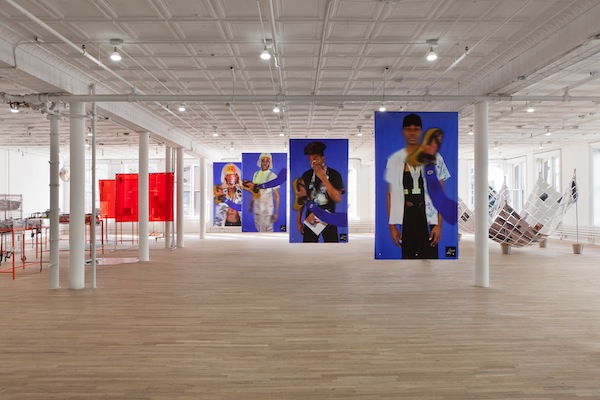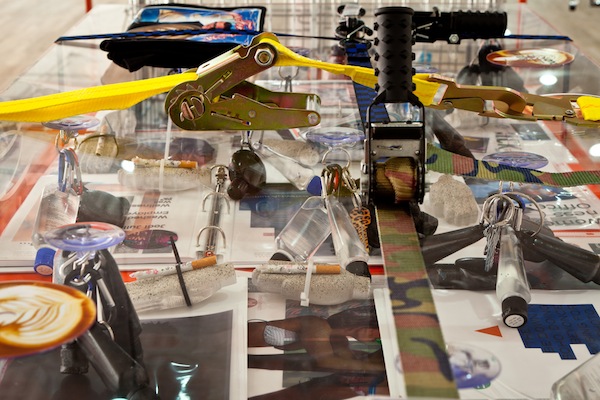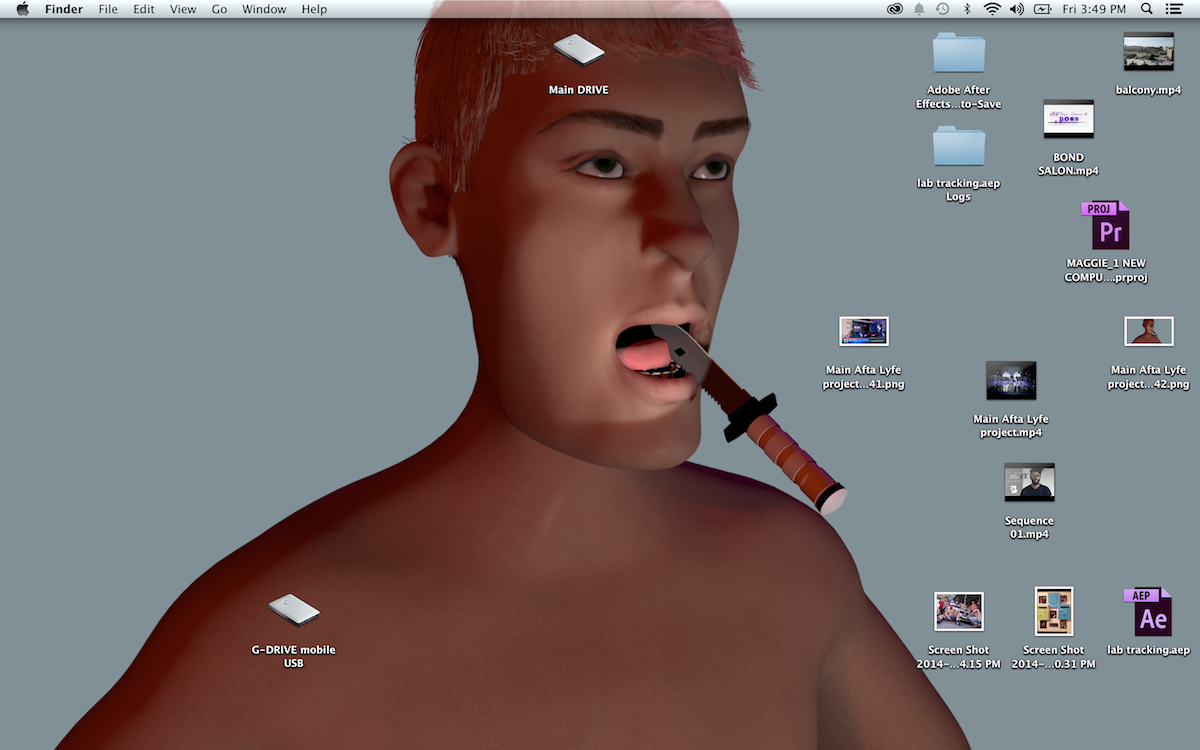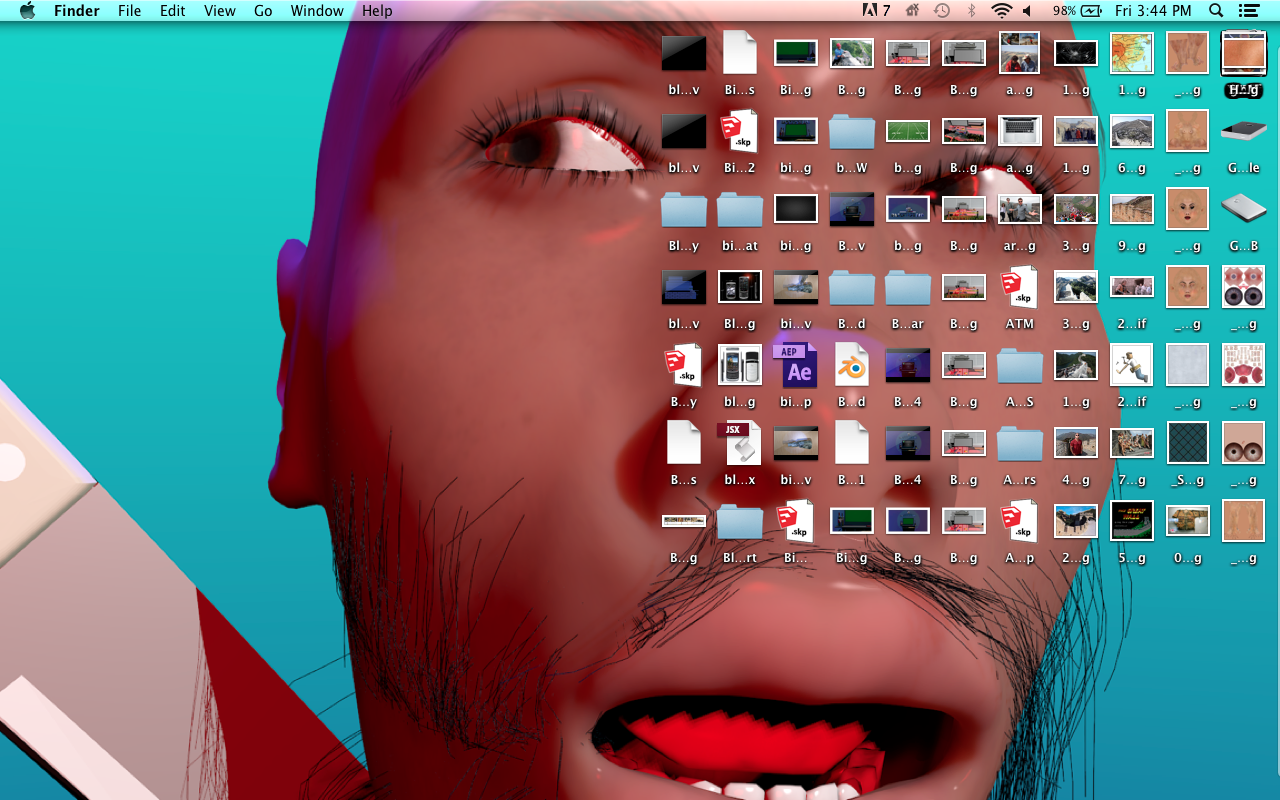The latest in a series of interviews with artists whose work makes use of or responds to network culture and digital technologies.

Wickerham & Lomax, BOY'Dega: Encore in the AFTALYFE (Season 2) (2014).
JG: DUOX started as a collaboration between the two of you, and collaboration seems completely central to your practice even though you're now working under the name Wickerham & Lomax. You've worked closely with DIS Magazine and other high-profile sponsors, and even the feel of your new work seems deliberately corporate and commercial. What is the shape and direction of this collaboration? Where did DUOX end, and how does Wickerham & Lomax extend?
Lomax: I think aside from using the language of surface which is one of our subjects—appearances, mirrors, screens, reflections, storefronts, sheen—we employ the language of accessibility, and that gets foregrounded explicitly in corporate and commercial imagery which isn't really an idea we investigate but an aesthetic we employ. I think the corporate and commercial for us is really a mask, not an interest.
Excerpt from BOY'Dega: Encore in the AFTALYFE (Season 2) 2014. Full video.
As a collaborative we seem to sit in each other's thoughts in an intimate way, similar to people in romantic relationships. There is something vulnerable about that privilege and that noted intimacy is shaping the new work. The collaboration is moving back towards the physical aspects of making things, which we had to forego in the production of the site. I hope what we're doing can gather a greater sense of economy so we can have more time to read, enjoy our friends, and gossip. Sometimes one has to live vicariously through their output and I think that's what Dan and I had to do to get the project done. We want to be able to take the city of Baltimore and have it function in a mutable way inside of our practice, whether that means interfacing with the public, making public works, twisting any historical narrative into a lived-in digital one. We want full agency to use the city as a platform.
DUOX ended around December 2013 with the release of Beyoncé's self-titled, and not because of that but in proximity to it. I'm obsessed with reading about DNA, particularly the essay "The Double Helix and Other Social Structures" and collaborative discoveries (Watson and Crick), so Daniel and I started contemplating the future of the project. I suggested we have the coding of the website DNA sequenced when all the Seasons [of the BOY'Dega series] are finished along with a round of acceptance speeches, which would be an internalizing of something one puts out into the world and a continued metaphor on reproduction / proliferation. DNA leads back to our surnames which will allow us to do more faithful investigations into subtopics of the practice like familial narratives and the biological prompts employed to make certain works. I think we wanted to take ownership of our work and we didn't set as a mission for ourselves a conversation about the anonymity of a collaborative to destabilize the individual genius or a complicated example of a brand, so we let it go. Personalizing.
JG: Your new project is BOY'Dega, which extends from your previous piece at Artists Space, DUOX4Larkin. The project follows the life of a child named BOY'D that was created as part of the exhibit and continues to transform and evolve in the digital. The project includes a website, BOY'Dega Edited4Syndication (2014) that is modeled partly on promotional sites for summer blockbusters or TV shows, but overburdened with interactive features, 3d graphics, and sheer narrative excess, all revolving around this central character..The figure of the boy seems present in a lot of your work: as an object, a backdrop, a character, a twink. Are you developing a "theory of the young boy"?
Wickerham: Our relationship to a boy or Boy'd was to create a shell as the main character for the tv show. This was the central character that would be all smoke and mirrors. This central shell would help direct attention towards our real interest, which was a show informed mostly by supplemental. The idea of raising a child allowed us to rethink what collaboration meant for us. It gave us the opportunity to be male and pregnant-parents towards the work we were trying to make. And we thought there was something long-term and difficult about raising a kid that perfectly mapped itself onto the long-term nature of this web project. Which in many ways is also about developing/raising 8 cast members in relation to us as creators. We all switch roles, so maybe by the end BOY'Dega will really be a parenting guide.
JG: Across all of your projects I'm struck by the use of layers to create complex surfaces. Of course layering is one of the most visible traces of digital production. Layers are most often enabled by frame buffer Alpha channels and Adobe Creative Suite software, but are also ubiquitous on the web and in the design of most all user interfaces. Where does this fascination with layers come from?


Installation views of "DUOX4Larkin." Artists Space, 2012. Photo: Daniel Pérez.
Wickerham: I never thought about it as a fascination, maybe it was informed by observation—but I know what you are referring to. This observation of layers was something you picked out when reviewing our Artist Space show, which strangely was a show partly about how screens hold images—so we must be a little fascinated! We've had an evolving relationship to how we present layers of information. When we started working together in 2009 we had the same intensity towards our interests as we do today but were less sensitive about how to organize two people's languages, whether into an exhibition or even a press release—so little was edited out. The viewer could feel accosted by what might look like a lot of signifiers. And the ideas could be indecipherable but the layers remained visible. So we had this reputation that we simply liked information. Now I think we've found a way to kept the complexity of our interests by refining how they get presented. Sometimes this is a matter of creating the right problem. For example in an upcoming show we asked ourselves what an image would look like if it were getting ready to go out. Another example is the form of a website which we can keep filling with information across time and space (experience). We are also seeing a variety of new projects in the studio develop together allows some to be simple and calm and direct. It's nice to let something be calm, that's part of our reality too.
JG: Your work seems to me explicitly digital. Maybe because everything feels that way now, or because a lot of your work feels like it's about “everything,” a frenzy of images, icons, text, and color. Your new project takes the shape of a website and video series, but the Artists Space exhibition of DUOX4Larkin involved a great deal of sculpture and painting that evoked a digital aesthetic. Would you describe your work as post-internet? Post-medium? Post-gay? How does your brand identify, or are you totally over it?

Wickerham & Lomax, BOY'Dega Edited4Syndication (Season 1) (2014).
Lomax: Over it would be an understatement. I don't know if classifications are really helpful anymore. These articulations are helpful for discourse, but really do a disservice to experiencing things. The viewer lives in that "I got it" phase far too quickly and I think people make things in an illustrative way far too often when they can function under the labels. It's hard for me to reconcile the taxonomies/classifications when what we really are doing is crafting experiences for a viewer that seeks to complicate their viewing, not of our work but of their encounter with the form we've taken on as a subject. I venture to describe our work as a temper tantrum of two people living with the access to everything but in the confines of reality. The work is full of fan boy hissy fits, unapologetically. We can describe it as part post-it note part posted up. This is a long way to say I don't know. We're not a brand, but I agree about the digital permeating the other forms.
Age: 28 and still getting carded. Boy'd is very young and wants to see us as a peer.
Location: West Baltimore
How/when did you begin working creatively with technology?
Wickerham: I would say when people started pointing out to me how I used my Blackberry camera. Nathan Lee wrote a paper about how I used my phone which was shocking because I'm not high on high technology. This was maybe 2008 so it's going to sound strange now but remember when you could post on Facebook before the feed was an algorithm. I would post so much that people could get a pretty clear picture of how I was seeing. It was a very positive experience. Now I hardly share anything as unmediated, it seems less necessary to both me and whoever is looking.
Lomax: I remember as a preteen being obsessed with our home printer, but mainly using it in conjunction with clip art to rename rooms by making large banners. It took me quite sometime to convince my parents to get web tv, which sucked, so having a computer and printer was everything. I suppose I could've done exciting things with the phone. Yet as an artist I think I was consciously using digital technology in high school but to little effect. I was also on that xerox machine like a zine girl feeling myself trying to make it work.
Where did you go to school? What did you study?
Maryland Institute College of Art BFA Painting 2009
Maryland Institute College of Art BFA Painting 2009
What do you do for a living or what occupations have you held previously?
Previously we've held our breath while working our boyfriends last nerve.
Trust >No funds.
What does your desktop or workspace look like? (Pics or screenshots please!)



